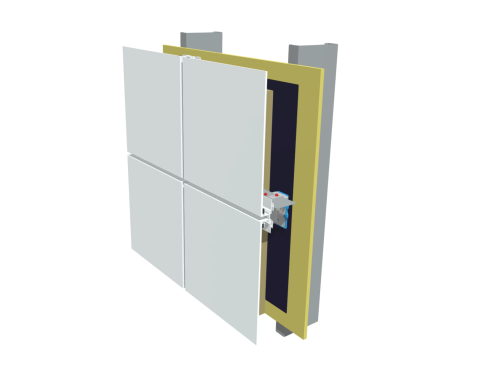Key clauses of the general conditions; means and methods
In the last post, we looked at the complementary clause, and saw how powerful it can be; we also looked at the limits of that power. Many architects know of that clause, and I have occasionally heard it cited, something like this: "I don't care if there is no specification for it; it's on the drawings, and you have to provide it!" In the same conversation, it wouldn't be unusual to hear, "No, I don't know how you're going to do it - that's means and methods!"
Although architects aren't shy about citing "means and methods" it seems many of them don't understand the full impact of what they're referring to. Turning again to the AIA A201, here's what Article 3 says (my italics).
§ 3.3 SUPERVISION AND CONSTRUCTION PROCEDURES
§ 3.3.1 The Contractor shall supervise and direct the Work, using the Contractor’s best skill and attention. The Contractor shall be solely responsible for, and have control over, construction means, methods, techniques, sequences and procedures and for coordinating all portions of the Work under the Contract, unless the Contract Documents give other specific instructions concerning these matters.
§ 3.3.3 The Contractor shall be responsible for inspection of portions of Work already performed to determine that such portions are in proper condition to receive subsequent Work.
§ 3.4 LABOR AND MATERIALS
§ 3.4.1 Unless otherwise provided in the Contract Documents, the Contractor shall provide and pay for labor, materials, equipment, tools, construction equipment and machinery, water, heat, utilities, transportation, and other facilities and services necessary for proper execution and completion of the Work, whether temporary or permanent and whether or not incorporated or to be incorporated in the Work.
Read that again, and again if necessary, and think about what is required. Now let's list the contractor's responsibilities.
- Supervise and direct the Work.
- Decide the proper way to do everything (means, methods, techniques).
- Decide when and how everything should be installed (sequences, procedures).
- Schedule the work of subcontractors and suppliers (coordinate).
- Determine if work already done is ready for the next step.
- Provide and pay for everything needed to complete the Work.
If architects understand all that, why do they waste time specifying things the contractor is responsible for? Is it necessary to explain how ceramic tile, or floor coatings, or roofing should be installed? Is it necessary to tell the contractor when activities should take place? Is it necessary to state that work of one section should be coordinated with work specified in another section? Does the architect need to state that prior work must be ready before proceeding with subsequent work? Does the contractor need to be told what is included for a specific activity, or who will pay for it?
The answer to all those questions is "No!" Unless, that is, the architect has decided to do those things, in which case the contractor is relieved of responsibility for them, as stated at the end of 3.3.1.
What then, is the architect's responsibility? After seeing what the contractor is required to do, there isn't much left. The architect must:
- Design and draw the appearance of the building, in sufficient detail to allow the contractor to build it.
- Specify those items that are needed to achieve the design intent. As noted in the last post, if the documents show tile but do not state what it is, the contractor can get it at the dollar store.
- Specify reference standards as needed to get the desired performance.
- Observe the construction as required by the owner-architect agreement, process payment applications, and so on.
- Use Division 01 to specify requirements not found in the general conditions.
Relying on the conditions of the contract and Division 01 will allow the architect to eliminate common redundancies, resulting in shorter specifications that will be easier to write, easier to understand, and easier to enforce. Needless references to the conditions of the contract and Division 01 can be eliminated, as can repetitive specifications for bidding requirements; submittals; substitution requests and prior approval requests; delivery, storage, and handling; cleaning; responsibility for payment of testing and corrective work; and so on. Instead of regurgitating manufacturers' specifications, a simple "Comply with manufacturer's installation instructions and recommendations", stated once in Division 01, will suffice.
Does that mean the architect cannot say anything about installation? No, but it's good to remember that when that happens, the architect has usurped the contractor's authority, and assumed the contractor's responsibility. Before doing so, architects must make sure they know more than the manufacturer and installer.
Note that nowhere do the general conditions require the architect to explain to the contractor how to run the job, nor do they require the architect to explain to installers how to do their jobs. A moment's thought should be enough to understand why this is so. Manufacturers' representatives have often told me that they have difficulty keeping up with changes in their products, even though those products represent only a small part of the entire building. If that's the case, how can an architect be expected to know everything about the multitude of products in a typical building?
As noted in the conclusion of the previous post, there is no substitute for showing everything required both on the drawings and in the specifications. However, doing so without understanding the means and methods clause will result in needless repetition and greater potential for contradictions, but more important, it may also result in the architect assuming additional risk.
© 2016, Sheldon Wolfe, RA, FCSI, CCS, CCCA, CSC
Agree? Disagree? Leave your comments at http://swspecificthoughts.blogspot.com/
When you subscribe to the blog, we will send you an e-mail when there are new updates on the site so you wouldn't miss them.






